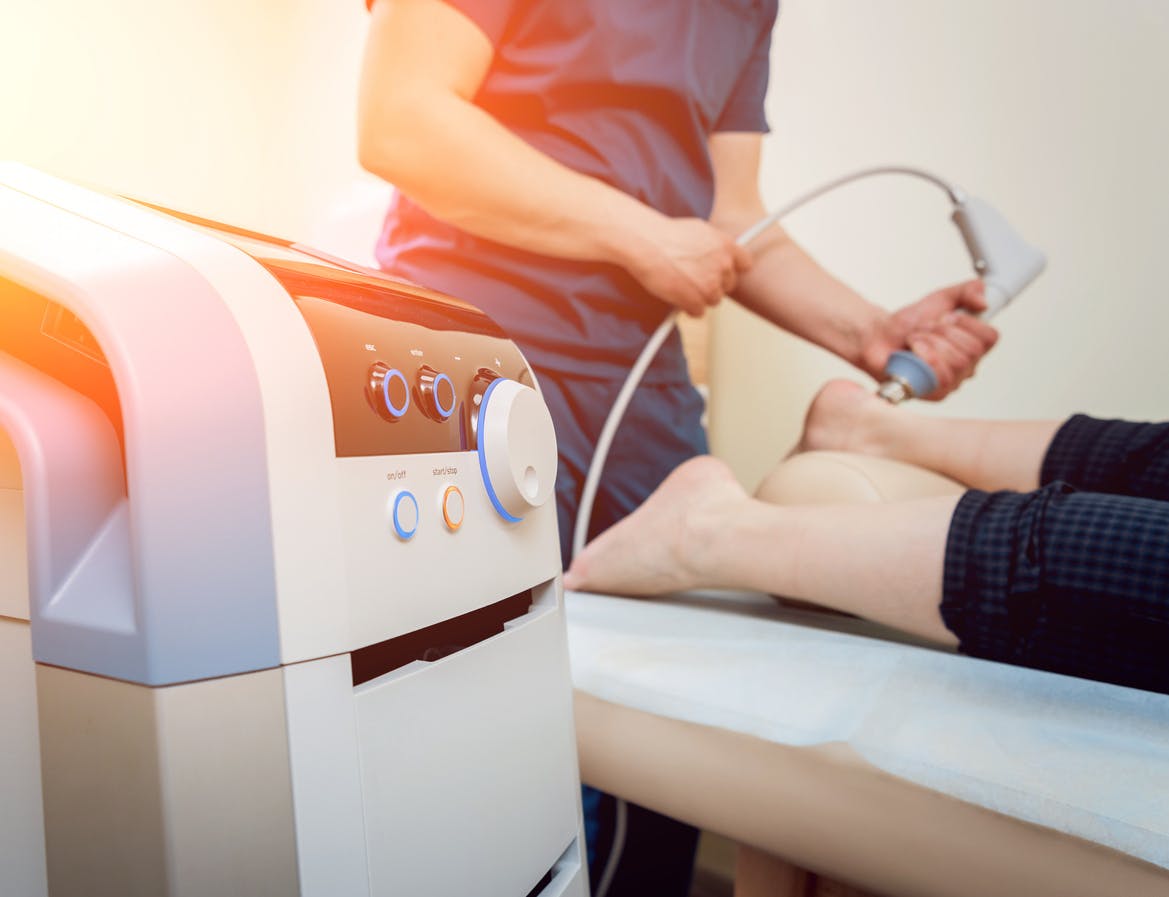Schedule A Consultation
Contact Us
Plantar warts are painful skin growths that typically form on the heels or other pressure points on the soles of the feet. They are caused by the human papillomavirus (HPV), which infects the skin through small cuts or abrasions. These warts often grow inward due to pressure from standing or walking and can develop deep, root-like structures that make them difficult to treat from the surface.
The virus thrives in warm, moist environments and is commonly contracted during barefoot activities, such as in locker rooms, showers, or around swimming pools. How quickly a plantar wart goes away on its own can vary from person to person, but younger individuals tend to heal faster than older ones. In some cases, however, warts can persist and become painful, requiring medical treatment for effective removal.


The Swift Wart Therapy System uses low-dose microwave energy, delivered through a specialized probe, to treat the root cause of plantar warts. By stimulating a localized immune response just below the skin’s surface, Swift helps the body naturally recognize and eliminate the virus over time.
Unlike traditional wart removal methods like cryotherapy, acids, or excision that treat only surface symptoms, Swift targets the virus internally. The treatment is clean, non-invasive, and requires no cutting, bandages, or downtime. With minimal discomfort and high effectiveness, Swift offers a smarter, more advanced approach to plantar wart removal in Newport Beach.

When it comes to wart removal in Rancho Santa Margarita, the Swift Therapy System offers a modern, non-invasive solution with high success rates and patient satisfaction. Unlike traditional methods that can be painful or require significant downtime, Swift uses microwave technology to treat the root cause of plantar warts by stimulating your body’s natural immune response.
Key benefits include:
Individuals receive 3-4 Swift wart removal treatments, spaced four weeks apart. Each treatment lasts 5-10 minutes and does not involve breaking the skin, administering anesthetic, or applying bandages.
Patients may feel some discomfort as the microwave energy waves rapidly increase tissue temperature during a two-second dose. However, the pain immediately subsides and there is very limited post procedural pain. Patients are able to resume daily activities immediately after treatment.


If you’re struggling with plantar warts, it’s important to seek care from a team that combines advanced treatment options with compassionate, patient-focused care. At Foot & Ankle Specialty Group, we proudly offer the Swift Wart Therapy System, a non-invasive and highly effective solution for plantar wart removal. Talk to your physician to see if this innovative treatment is the right fit for you.
For those seeking trusted wart removal in Newport Beach, our modern, family-friendly podiatry clinic has been a go-to resource since 2001. Dr. Salma Aziz, Dr. Petrina Yokay, and Dr. Jessica Arneson are a skilled team of female physicians dedicated to delivering expert care in a warm and welcoming environment. We treat a wide range of foot and ankle conditions using both traditional and advanced techniques. To learn more or schedule a consultation, contact us today.
What are warts, and how do they develop?
Is it necessary to remove warts, or will they go away on their own?
Is wart removal painful?
Can warts come back after removal?
How long does it take for warts to heal after removal?
When should I see a healthcare provider for wart removal?
Warts are non-cancerous skin growths caused by the human papillomavirus (HPV). They can develop on any part of the body, including the hands, feet, face, and genital area, and are typically transmitted through direct skin-to-skin contact.
In many cases, warts may resolve on their own without treatment, especially in children. However, wart removal may be recommended if the warts are painful, spreading, or causing cosmetic concerns. Additionally, certain types of warts, such as genital warts, may require treatment to prevent complications or transmission.
The level of discomfort during wart removal depends on the treatment method used and individual pain tolerance. Procedures like cryotherapy or surgical excision may cause some discomfort or mild pain, which can usually be managed with over-the-counter pain relievers.
Warts may recur after removal, especially if the virus that caused them is still present in the body. To reduce the risk of recurrence, it's important to follow proper hygiene practices, avoid picking or scratching warts, and consider treatments that target the underlying virus, such as immunotherapy.
The healing time after wart removal varies depending on the treatment method used and the size and location of the wart. In general, it may take several weeks for the skin to fully heal, and multiple treatments may be necessary for complete removal.
You should consider seeing a healthcare provider for wart removal if you have large, painful, or persistent warts, warts on the face or genital area, or if over-the-counter treatments have been unsuccessful. Additionally, individuals with weakened immune systems or diabetes should seek medical advice for wart treatment.